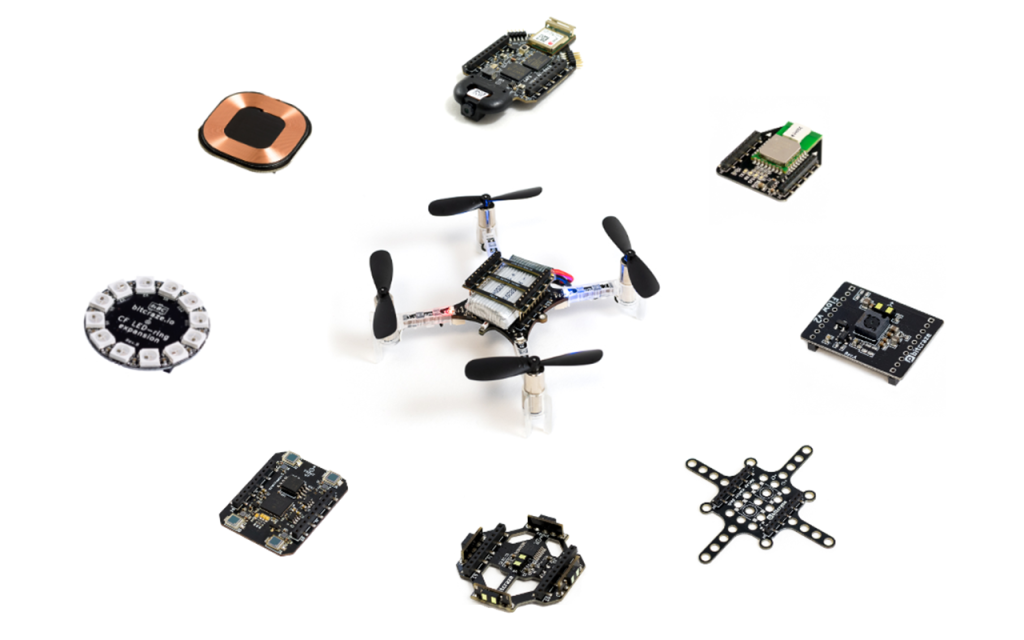For this months developer meeting we will be discussing the increasing complexity of the deck subsystem, talking about the challenges we see moving forward as well as discussing some possible solutions. In the blog post this week I’ll be discussing the first part, some of the challenges moving forward.

After releasing the Crazyflie Nano Quadcopter back in 2013 we realized we wanted something more than the small expansion connector we placed there. Sure, it was possible to attach more electronics (and we did) but mechanically, electrically, and software-wise it was a hassle. So when we got around to working on the Crazyflie 2.0 in 2014 we were really happy with the new expansion connector. The goal was to offer users new hardware solutions as they became available as well as giving the possibility to create customized hardware configurations. It supported multiple buses, different heights for the decks, top and bottom attachment, automatic detection, and last, but not least, it held the battery in place. Initially, we released a few decks, but over the years there have been many more. Some are very simple, like the breakout, and some are very complex, like the AI deck.
Although we’re still very happy with the deck subsystem, we’re starting to see some challenges moving forward as deck complexity increases. Some of these issues are:
- Resource sharing in the STM32: Mainly DMA conflicts between different peripherals, like conflict for DMA using DSHOT on the Crazyflie Bolt and the WS2812b driver for the LED-ring.
- Bus arbitration and performance: Some decks make excessive use of some buses, which can cause issues with certain combinations like the LPS deck and micro-SD card deck.
- Deck combinations and pins: As more interesting decks are released and we’re able to carry more weight, users want to combine more decks. Although we try to be smart with pin allocation there’s a limit on how you can combine the decks.
- MCUs on decks: With increased complexity also comes separate MCUs on decks. Although working well for offloading the main MCUs on the Crazyflie, the complexity quickly increases both for usage and for development. This is something we’ve seen with the AI deck for instance, which contains 2 MCUs.
The challenges above are something we discuss from time to time around the office, often ending up at a whiteboard pitching various ideas. The most popular solution (and therefore the most likely one becomes reality) is moving complexity off the Crazyflie and onto MCUs placed on the various decks. This would probably solve most of the challenges with the first three points, but obviously worsen the last point above.
So the question quickly becomes, how do we work with multiple decks with one (or more) MCUs without the situation becoming too complex? Something often heard in embedded is that for each MCU added the complexity grows exponentially. From experience, we can say that this isn’t so far off.
With the new Crazyradio 2.0 out, discussions on new protocols, the possibility of a library rewrite, new deck prototypes and more payload capabilities, it’s becoming more clear how this would fit in. We still haven’t decided on what solutions we’re using, but we do have a bunch of ideas that we think would fit together to meet these challenges moving forward. On Wednesday I’ll continue to discuss some of these challenges in our monthly developer meeting and also discuss some of the suggested solutions. We’re also more than happy to hear comments about this from our users. If you’re interested in joining the discussion you will find the link here. We hope to see you there!